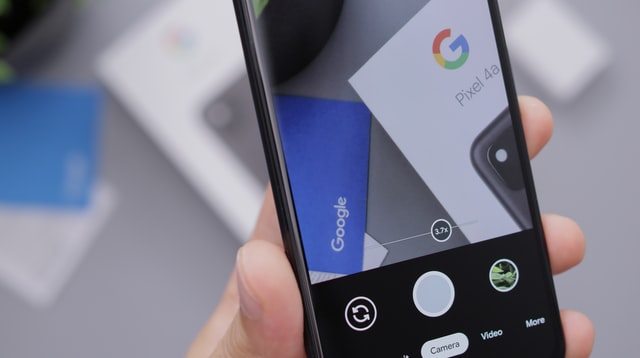Are SEO Tips and Hacks even important for you?
Well, according to most experts, Google changes its search algorithm 500 to 600 times per year. In 2020 alone, Google made 4,500 changes to its algorithm. This figure includes updates to its ranking system, user interface, and other features.
There are over 149 confirmed updates that Google has made to its algorithm from 2000 to date. What this shows is how frequently we have to relearn SEO. It is a game which can be changed at any moment — but once you do your homework, you’ll be ok.
In all our years of experience as a digital marketing agency, Dgazelle Digital has seen clearly that SEO trends repeat themselves over and over again. However, while most of these changes don’t significantly change the SEO landscape, some updates are significant- which is why In this report we’ll provide you with a summary of the most important and simple SEO tips, SEO trends, and hacks you need to know in 2022.
Here’s what we will cover…
- Top 5 SEO Trends for 2022
- Top 5 Tips to greatly optimize your SEO in 2022
- Conclusion

Is SEO Still Relevant in 2020?
SEO is still relevant in 2022 because it helps businesses to get higher search engine rankings. However, the game has changed. The past five years have seen an explosion in technology that has made it easier than ever for small businesses to get their message out there and reach potential customers.
However, with this change also comes a lot more competition. In order to be successful in today’s market, you need a strategy that is both effective and scalable. If you want to succeed in the future, you need to develop a strategy that can handle whatever comes your way.
Just keep reading to discover SEO tips and also, find out how SEO has changed over the last decade and what this means for your business in 2022.
Top 5 SEO Trends for 2022
The individual who understands the future will always win in the market or any other place. This holds true for SEO (search engine optimization) as well. Hence, it is imperative that you stay updated with the SEO trends so that you can be ahead of your competitors.

Here they are:
1. SEO is no longer just about keywords and links – it’s about user experience-
This is not to say that keywords and links are dead, However, standing alone, they’re certainly not as effective as they were before (Google rankings are less susceptible to manipulation). Once upon a time, SEO was all about ranking for specific keywords and links. However,
Since Google began using machine learning, SEO continues to evolve and more digital power flows to the user- Now, SEO is focused on providing a one-of-a-kind user experience. Digital marketers and content developers should know how to develop great content that will be rich and relevant to users.
2. The rise of various search methods-
With the various technical developments like the emergence of artificial intelligence, virtual reality, IoT technology, and other emerging technologies, the SEO industry seems to have a full-throttle revolution.
These innovations have brought about the rise in various search methods, especially voice searches and visual searches. Voice assistants like Siri, Alexa, Cortana, and Google assistant now rake over 2.8 billion activations. Visual searches allow users to take photos of images to search for. This development will bring a great opportunity for page optimization for those websites that are visual-heavy.
You can check our post on how to maximize your content for voice searches
3. Mobile-First Indexing is Now Standard–
Mobile-first indexing is now commonplace. Google announced in January 2016 that it would be launching mobile-first indexing in the near future, providing a warning on all desktop searches and announcing internally at Google that they would no longer be testing or hinting when mobile-first would launch.

The reason for this shift is that users are increasingly accessing the internet through their phones. As a result, if Google is unable to send search queries to websites that are not optimized for mobile devices, it risks losing a significant amount of user engagement and usage, which is bad news for them.
If you don’t want to miss out on the SEO opportunity in 2022, it is critical you build your sites with today’s technologies.
Check us to get a great Mobile-Friendly website, so you do not miss out on the trend.
4. The rise of AI-Generated content-
AI has been changing the online world for a while now, from personal assistants to self-driving vehicles; we can say that AI has come quite far from the days of science fiction. The world of content is not an exception; in fact, it’s already happening.
You can now use AI tools to generate great user-friendly content. AI technology has gotten so good at copying human speech patterns and writing styles that it can now generate content that is indistinguishable from the human-written text. These AI programs will be able to generate content based on keywords and search terms you input, as well as images and videos they might want to include.
This trend is bound to become mainstream very soon. More companies will start using AI to generate content such as articles and blog posts, which means more opportunities for SEO experts since they will then have to optimize those pieces of content just like they would do with human-written articles.
5. The Use of More Structured Data and Rich Snippets-
Although it is not a new trend, the use of more-structured data and rich snippets keeps growing every year. Google Search Console already provides reports on structured data items, and with the recent introduction of BERT (Bidirectional Encoder Representations from Transformers), it’s likely that this will become even more important.

Why? Because they help search engines understand how your website is structured and what each page is about. More specifically, schemas enable you to markup your pages in ways that are specific to their content type – allowing you to assist Google in categorizing your website into categories that are useful to users.
What are the 3 aspects of SEO?
The four SEO phases are:
On-Page Optimization:
This is one aspect of SEO in which you optimize your website to obtain the most natural search engine results. This can be achieved by developing content that is keyword-rich, writing quality content, and utilizing other SEO strategies like creating internal links between pages and improving your site’s title and meta descriptions.

Off-Page Optimization:
The second aspect of SEO involves making your website more appealing to search engines’ off-page algorithms. These consist of establishing backlinks to your website from other websites, social media profiles, and press releases. Additionally, you can use backlinks to raise the authority of the pages that Google Search Console has indexed for you (GSC).
Local SEO:
The third SEO aspect, or local SEO, focuses on local search engine results for a specific region or locality. For instance, to rank highly in local search engines like Google Maps or BING Maps for “shoe stores,” if you run an online shoe store, you should optimize your website for shoe shops.
Top 5 SEO Tips to greatly optimize your website in 2022
1. Really Know your Audience, their segmentation, and their needs-
With the emergence of technologies such as voice search, artificial intelligence (AI), and virtual reality (VR), how your customers speak, think, and the search will continue to change drastically over the next few years. To succeed in SEO in 2022, you need to start preparing now.
The most successful businesses understand their customers’ needs better than the competition can. Companies that have a defined audience with unique insight into what their customers want will be more likely to gain higher rankings and make real connections with their audiences.
The foundation of any SEO strategy is understanding- how your customers speak, think, and search throughout the customer journey. This will also help in your keyword and UX research—and then adjusting your content to meet those needs.
Check out our post on 7 steps to unmistakably identify your ideal client for your business
2. Develop High-quality content that is also capable of optimizing your ad performance
What do I mean by “optimizing your ad performance?” To put it simply, Google’s algorithm will give preference to websites with high-quality content that also has a high click-through rate (CTR) in their search results.
Here is an example of what I am referring to:
Note how there are two different ads for this particular search result, and that the first ad has a far higher CTR than the second. This is because the first ad has more relevant keywords in its title, whereas the second one is just listing the brand name. These types of ads tend to have lower CTRs.
Google wants happy advertisers, and part of this strategy involves giving them better placement on their search results pages if they are getting high click-through rates. However, it’s not enough just to get people clicking on your ads—you need to make sure that they are landing on pages with quality content that answers their questions or gives them value in some way as well! Otherwise, they will leave immediately after they see what you have offered them (which means less revenue for advertisers). This leads us to our third point…
3. Focus on User-Experience, not just keywords-
If a user has a negative experience on your site, they will remember it and avoid returning. So, if you don’t have a good user experience, don’t waste your time and money on SEO.

Many people believe that having a large number of keywords in the content and meta-data is the only thing that matters for SEO. However, while keywords are important, Google and other search engines can determine whether a piece of content is relevant to what the user is looking for without relying solely on keywords.
You need to make sure your site is responsive and works well on mobile devices as well as desktop computers. It also means creating pages that load quickly and are easy to navigate. As we’ve already discussed above, you need to provide content that your audience will find useful and interesting—not just a bunch of keywords stuffed into an article in the hope that they will help you get higher rankings on search engines like Google or Bing.
4. Earn Authoritative Backlinks-
If you’re not earning high-quality, authoritative backlinks, you’re not ranking. Google’s algorithms are constantly on the move and the only way to keep up is to provide the best content that attracts links from other trusted sites—and, for heaven’s sake, make sure those links are relevant to what you’re offering.
Link building can be one of the most challenging parts of SEO, but it doesn’t have to be. Keep an eye out for broken links or outdated content on sites that are relevant to your topic. These are great opportunities to approach site owners with a proposal for a replacement link—a win-win situation for both parties. You’ll also want to create as much shareable content as possible so you can optimize your reach by including social sharing buttons and giving visitors a way to subscribe (and share) via email and RSS feed.
5. Subscribe to Join our email list
Subscribing to our email list is a great way of keeping up-to-date with the latest SEO tips and trends, as well as receiving exclusive content that isn’t available anywhere else on our site. To join, simply enter your email address into the box below and you’ll be added instantly. We promise not to spam you or pass on your information to third parties!
Conclusion
As search engine optimization keeps evolving rapidly, there is always something new to learn. That’s why it is important to keep up with the latest trends and practices to stay on top of your game. Staying on top of your game is vital if you want to maintain and improve your online visibility. Join our email list today.






